The Importance of Modern UI Website Design

In today’s digital world, where competition for user attention intensifies by the moment, modern UI website design has transformed from a luxury option into a vital necessity.
#Modern_UI not only creates the first visual #impression on the audience but also shapes their overall #user_experience, playing a fundamental role in a business’s online success.
An outdated or confusing user interface can render even the best content or services ineffective, while a modern and user-friendly design converts visitors into loyal customers.
The importance of this issue is such that research has shown users decide whether to stay on a website or leave it in less than a few seconds.
This decision is often based on the quality of the user interface and the overall feeling they get from it.
An optimized modern UI website design streamlines the user’s journey on the website, makes information quickly accessible, and guides them towards the website’s intended goals (such as purchase, registration, or contact).
This approach means going beyond mere aesthetics and focusing on efficiency, ease of use, and effective user interaction.
Modern design reflects a brand’s reliability and professionalism and greatly helps build trust with the audience.
Ultimately, investing in modern UI website design is not just an expense, but a strategic investment for growth and sustainability in the digital space, whose returns can be seen in increased conversion rates, reduced bounce rates, and improved search engine rankings.
Are you tired of losing business opportunities due to not having a professional corporate website?
Rasawab helps you with professional corporate website design to:
✅ Build a powerful and reliable brand image
✅ Convert website visitors into loyal customers
⚡ Get a free consultation now!
Key Principles in Efficient User Interface Design

To achieve a truly efficient modern UI website design, adhering to a set of key principles is essential.
These principles help designers create experiences that are not only beautiful but also functional and understandable.
The first and perhaps most important principle is #simplicity.
The user interface should not be complex or cluttered; every element should have a clear purpose and help the user achieve their goal.
Eliminating superfluous elements and focusing on what is truly important is the key to a simple yet powerful design.
The second principle is #consistency.
Design elements, including fonts, colors, icons, and button placement, should be consistent throughout the website.
This consistency helps the user become familiar with patterns and anticipate what will happen when they click on an element, thus giving them a greater sense of comfort and control.
The third principle is #immediate_feedback.
Users need to know the result of their actions; was the form submitted? Was the button clicked? Immediate visual or textual feedback eliminates ambiguity and makes interaction dynamic.
Modern UI website design should also include the principle of efficiency; meaning users should be able to complete their tasks with the least effort and in the shortest possible time.
This includes optimizing paths, reducing the number of clicks, and providing useful shortcuts.
Additionally, user control over the interface is very important; users should feel that they have control over their experience, be able to undo their mistakes, or change their choices.
Using clear visual hierarchy, sufficient white space, and appropriate contrast for readability are also important visual principles in graphic design that apply to user interface design as well.
Observing these principles not only helps create an attractive user interface but also makes users visit the website with more satisfaction and return to it.
New Tools and Techniques in Design
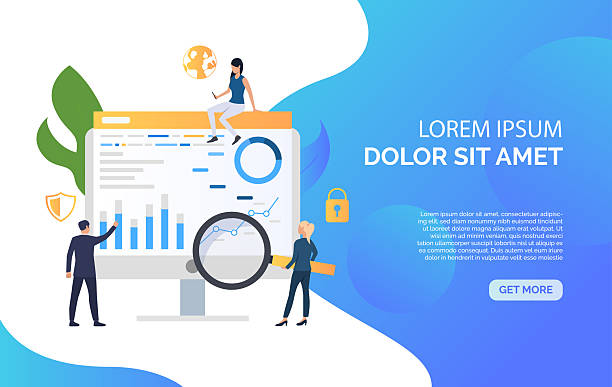
To achieve a modern UI website design, today’s designers rely on a set of advanced #design_tools and #frameworks and #new_techniques that facilitate and accelerate the design and development process.
In the field of UI/UX design tools, software like Figma, Sketch, and Adobe XD have gained much popularity due to their real-time collaboration capabilities, rich component libraries, and strong prototyping capabilities.
These tools allow designers to quickly turn their ideas into visual designs and then into interactive prototypes that can be used for user testing.
Additionally, in the frontend development section, JavaScript frameworks like React, Vue, and Angular play a key role in implementing modern and responsive user interfaces.
These frameworks, by providing reusable components and efficient architectures, help developers build high-performance websites with smooth user experiences.
Among new techniques, Atomic Design can be mentioned, which separates UI elements into the smallest units (atoms) and then combines them to build larger components, as well as optimizing lazy loading of images and content to improve website speed.
The use of Design Systems, which are a collection of shared principles, components, and guidelines for design, also ensures that all aspects of a modern UI website design have coherence and integration.
These tools and techniques enable designers to turn the most complex ideas into reality and deliver websites with unparalleled user experiences.
In the table below, we compare some popular UI/UX design tools:
| Tool | Key Features | Main Use |
|---|---|---|
| Figma | Real-time collaboration, browser-based, strong design systems, interactive prototyping | UI/UX design, prototyping, wireframing, team collaboration |
| Sketch | Symbol libraries, high extensibility, reusable components, macOS only | UI design, icon and graphic element creation |
| Adobe XD | Integration with Adobe ecosystem, advanced prototyping, auto-animate | UI/UX design, prototyping, mobile app and web design |
| InVision Studio | Complex animations, advanced prototyping, vector design tools | Design and prototyping with focus on animation and interactions |
User Psychology and Its Impact on Design
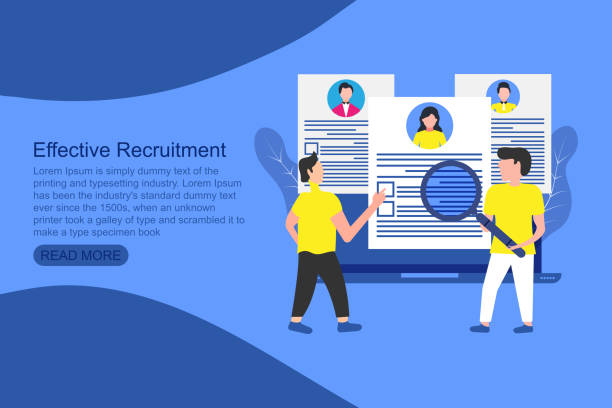
One of the main pillars of a modern UI website design is a deep understanding of #user_psychology.
Design is not merely visual; it is deeply intertwined with how humans think, feel, and behave.
Successful designers know how users process information, what catches their attention, and what makes them feel comfortable or confused.
Concepts like #color_psychology play a vital role in UI design; for example, blue usually evokes feelings of trust and calm, while red can indicate excitement or warning.
Conscious use of colors can influence user decision-making and emotions.
Also, understanding user #behavioral_patterns, such as their habit of scrolling or searching for specific information, helps designers create more optimal layouts.
Psychological laws such as “Hick’s Law,” which states that the time required to make a decision increases with the number of options, or “Fitts’s Law,” which determines the relationship between the size of a target and its distance to the time it takes to move to it, directly influence the design of interactive elements like buttons and menus.
Creating #User_Personas is also an important step in psychologically understanding the audience; by defining personas representing key users, designers can better identify their needs, goals, motivations, and challenges, and design the user interface to meet these aspects.
Modern UI website design built on this psychological understanding can create experiences that are not only visually pleasing but also deeply aligned with users’ cognitive and emotional needs, thereby providing more effective and satisfying interaction.
This approach ensures that every element in the design has a purpose beyond aesthetics and directly contributes to improving the overall user experience.
Are you concerned that your e-commerce site has visitors but no sales?
Rasawab solves your main problem with professional e-commerce website design!
✅ Significant sales increase with targeted design
✅ Flawless user experience for your customers
⚡ Get a free consultation!
Latest Trends and Innovations in User Interface Design

The world of modern UI website design is constantly evolving, with new trends and innovations emerging that redefine users’ digital experience.
Awareness of these trends is crucial for any designer who wants to be at the forefront of the industry.
One of the prominent trends is #Dark_Mode, which not only has its own visual appeal but is also effective in reducing eye strain in low-light environments and saving battery consumption on devices with OLED screens.
This trend is rapidly becoming a standard in modern applications and websites.
#Neomorphism, a visual style combining skeuomorphism and flat design, has also garnered significant attention, adding a sense of depth and realism to the user interface by creating soft, extruded 3D elements.
#Micro-interactions are also playing an increasingly important role in improving the user experience.
These small, subtle animations, such as a button changing color when clicked or a confirmation icon appearing after submitting a form, not only make the website more dynamic but also provide important visual feedback to the user.
The emergence of Voice User Interfaces (VUIs) and the use of artificial intelligence in design are other innovations that shape the future of modern UI website design.
These technologies allow users to interact with websites using voice commands and have more personalized experiences.
Also, the focus on minimalist design and intelligent use of white space, to reduce visual clutter and better guide user attention to the main content, continues to be a popular trend.
These innovations and trends enable designers to create websites that are not only visually impressive but also perform at the highest level and keep pace with the evolving needs and expectations of users.
Responsive Design and Mobile Experience
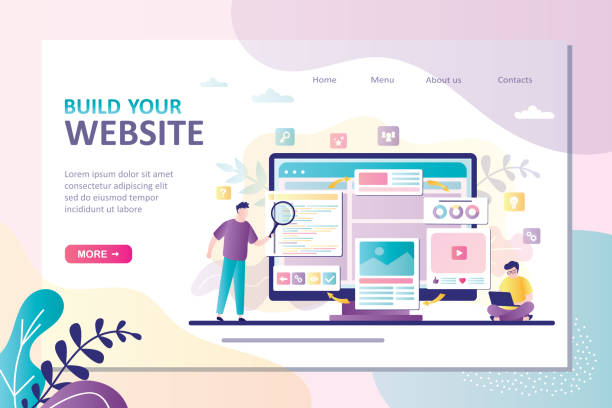
In an era where the vast majority of internet users access websites via their mobile devices, #responsive_design and providing a flawless #mobile_experience are no longer a competitive advantage, but a fundamental requirement for any modern UI website design.
The #Mobile-First_Design approach means that designers first begin designing for the smallest screens, namely mobile, and then gradually expand it for tablets and desktops.
This method ensures that the website is inherently optimized for mobile users and then improves the user experience by adding details and complexities for larger displays.
A responsive website automatically adjusts its layout, images, and content to the screen size of the user’s device.
This is done through techniques such as Media Queries in CSS, flexible images, and fluid grids.
The main goal is to provide a consistent and optimized user experience, regardless of the device type (smartphone, tablet, laptop, or large monitors).
Modern UI website design must carefully consider touch aspects; interactive elements should be large enough to be easily touched with a finger, have sufficient spacing between them to prevent accidental touches, and properly support touch gestures (such as swiping or zooming).
Website loading speed on mobile is also of utmost importance, as mobile users often have access to slower or less stable internet.
Therefore, optimizing images, compressing code, and using a CDN (Content Delivery Network) to deliver content from the closest server to the user are essential for speed improvement.
Ignoring responsive design can lead to high bounce rates, poor search engine rankings, and ultimately loss of customers.
Therefore, every responsive web design for a modern UI website design should be considered from the outset to ensure that the website is accessible and enjoyable for every user, on every device.
Accessibility and Inclusive Design
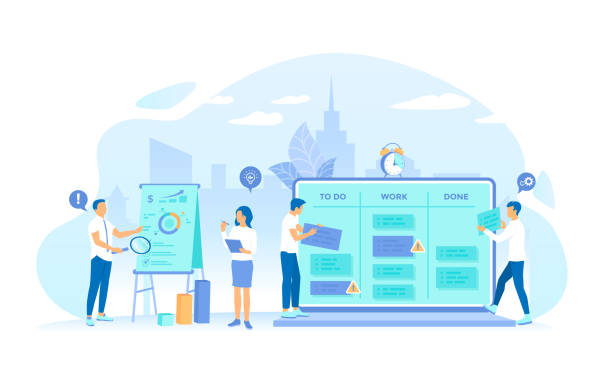
One of the vital and often overlooked aspects of modern UI website design is #Accessibility.
Accessibility means that websites and applications are designed to be usable by everyone, regardless of their abilities or disabilities.
This includes individuals with visual, hearing, motor, cognitive, and neurological impairments.
#Inclusive_Design is an approach that considers the needs of a wide range of users from the outset, rather than targeting only a specific group.
Adherence to the Web Content Accessibility Guidelines (WCAG) provided by the World Wide Web Consortium (W3C) is a fundamental step in this direction.
These guidelines include recommendations for increasing text and background #color_contrast, using alt tags for images (which help screen readers understand image content), ensuring keyboard navigation (for users who cannot use a mouse), and providing captions or transcripts for audio and video content.
A modern UI website design that prioritizes accessibility is not only ethically correct but can also have commercial benefits; better accessibility means a larger target market and improved SEO, as search engines prefer structured and accessible content.
For example, using semantic HTML ensures that content is correctly read by assistive technologies and has a logical structure.
Designing buttons and links with appropriate sizes, providing clear and understandable error messages, and allowing users to adjust font size all contribute to an inclusive user experience.
Ultimately, modern UI website design is incomplete without considering accessibility, and its goal is to create a website for everyone.
The table below shows some of the most important principles of web accessibility:
| Principle | Description | Practical Example |
|---|---|---|
| Perceivable | Information and user interface components must be presented in ways users can perceive. | Providing alternative text (alt text) for images, using appropriate color contrast. |
| Operable | User interface components and navigation must be operable. | Full keyboard navigation, sufficient time control (e.g., no time limits for forms). |
| Understandable | Information and the operation of user interface must be understandable. | Using simple and clear language, creating a logical and predictable structure. |
| Robust | Content must be robust enough that it can be interpreted by a wide variety of user agents, including assistive technologies. | Using semantic HTML, ensuring compatibility with browsers and assistive technologies. |
Performance Optimization and Loading Speed

Website loading speed not only directly impacts user experience but is also a significant factor in search engine ranking (SEO).
In the realm of modern UI website design, #website_speed is as important as aesthetics and user-friendliness.
Today’s users are impatient and expect pages to load quickly; any delay, however brief, can lead to an increased Bounce Rate and loss of visitors.
Therefore, performance optimization must be considered from the very early stages of design and development.
One of the key methods is #image_optimization.
High-quality images can be very large, drastically reducing loading speed.
Using next-generation image formats like WebP, compressing images without noticeable quality loss, and implementing Lazy Loading features that load images only when they are within the user’s viewport, are effective solutions in this regard.
#Clean_and_optimized_coding also plays a crucial role; reducing superfluous CSS and JavaScript codes, compressing these files (Minification), and using a CDN (Content Delivery Network) to deliver content from the closest server to the user, can significantly improve speed.
Modern UI website design should also include font optimization; using web fonts that are properly compressed and loaded is vital for maintaining speed.
Using browser caching to store static website files on the user’s device makes subsequent visits faster.
All these techniques are implemented to ensure that the website is not only beautiful and user-friendly but also accessible to the user in the shortest possible time.
This integrated approach ensures that modern UI website design covers all dimensions of a successful digital experience.
Are you worried about losing customers because you don’t have a professional e-commerce site?
With e-commerce website design by Rasawab, forget these worries!
✅ Significant increase in sales and conversion rate of visitors to customers
✅ Professional and user-friendly design that builds customer trust
⚡ Get a free consultation from Rasawab
Measuring Success and Continuous Improvement
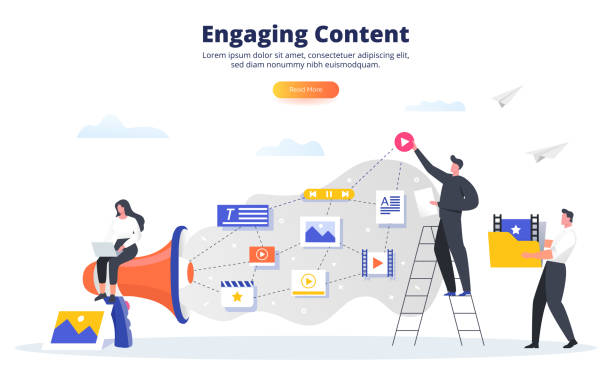
After implementing a modern UI website design, the work is not over.
Instead, a crucial stage of #measuring_success and #continuous_improvement begins.
To ensure that the design has met its goals and provides an optimal user experience, we need to analyze data and gather user feedback.
Web #analytics tools like Google Analytics provide valuable information about user behavior; including bounce rate, time spent on pages, navigation paths, and conversion rates.
Analyzing these metrics can reveal the strengths and weaknesses of the design.
For example, if the bounce rate on a particular page is high, it might indicate a confusing user interface or content that doesn’t align with user expectations.
#Conversion_Rate, which indicates the percentage of visitors who perform the desired action (such as a purchase or registration), is one of the most important indicators of the success of a modern UI website design.
A/B Testing is a powerful technique for design optimization.
In this method, two or more versions of a page or design element are randomly shown to different groups of users, and the performance of each version is measured to identify the best option.
Gathering #user_feedback through surveys, interviews, or usability testing is also very important.
This qualitative feedback provides deep insights into user problems and dissatisfaction points that cannot be extracted from quantitative data.
Based on this data and feedback, necessary changes can be applied to the design.
This process is an iterative cycle of design, implementation, measurement, and improvement that continuously moves the website towards perfection.
Ultimately, the success of a modern UI website design lies not only in its initial beauty but also in its ability to adapt and continuously improve based on changing user needs and behaviors.
The Future of Modern UI Design and Challenges
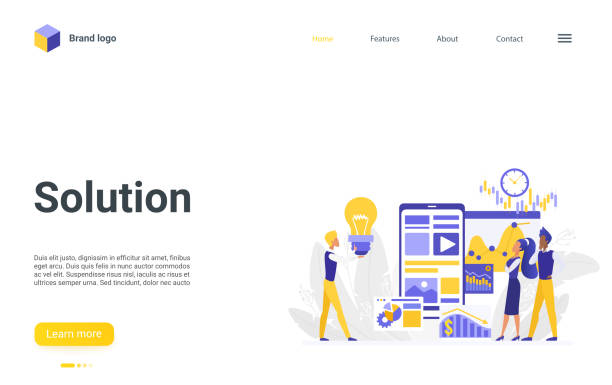
Looking to the future, it can be predicted that modern UI website design will undergo deeper transformations, driven by technological advancements and changing user expectations.
#Artificial_Intelligence (AI) and machine learning will play an increasing role in the design process.
AI-powered tools can help designers automate repetitive tasks, analyze user data to identify patterns, and even generate initial designs.
This allows designers to focus on more creative and strategic aspects.
Also, it is expected that #Virtual_Reality (VR) and #Augmented_Reality (AR) will gradually become new interactive platforms and expand UI concepts to entirely new dimensions; websites may go beyond two-dimensional screens and become three-dimensional and immersive experiences.
These changes also bring new challenges.
One of the biggest challenges is maintaining simplicity and user-friendliness in the face of increasing technological complexities.
How can VR user interfaces be designed to be intuitive and accessible? Another challenge is #ethics_in_design.
As designers’ power to influence user behavior increases, ethical responsibilities also grow.
Issues such as Dark Patterns, which deliberately deceive users or steer them towards unwanted choices, require serious attention.
Modern UI website design in the future must not only be technically advanced but also act responsibly from a human perspective.
Also, keeping pace with the rapid changes in technology and maintaining up-to-date skills and tools will be a continuous challenge for designers.
Nevertheless, these changes offer unparalleled opportunities for innovation and creating experiences that were previously unimaginable.
The future of modern UI website design is exciting, dynamic, and full of potential for transformation, provided that designers can turn challenges into opportunities and maintain a human-centered approach.
Frequently Asked Questions
| Question | Answer |
|---|---|
| What is modern UI? | Modern UI refers to a design that uses new trends, simplicity, excellent user experience, and attractive visual elements. |
| Why is it important to use modern UI in website design? | It attracts and retains more users, creates a professional feel, improves user experience, and increases conversion rates. |
| What are the main features of a modern UI? | Simplicity, sufficient use of white space, readable typography, attractive and harmonious colors, subtle animations, and responsive design. |
| How does responsiveness relate to modern UI? | Responsive design is an essential feature in modern UI that ensures the site displays well on all devices (mobile, tablet, desktop). |
| What is the role of typography in modern UI design? | Choosing appropriate fonts and using them correctly increases readability and contributes to the site’s beauty and visual identity. |
| What is White Space and why is it important in modern UI? | It is the empty space between different elements on a page that helps improve readability, user focus, and creates a sense of cleanliness and order. |
| What are the benefits of using animations in modern UI design? | Subtle and purposeful animations can attract user attention, improve interaction, and make information transfer more engaging. |
| How can User Experience (UX) be improved alongside modern UI? | By understanding user needs, simplifying navigation paths, providing appropriate visual feedback, and easy testability. |
| Does modern UI always mean using bright colors? | No, modern UI can use various color palettes, including dark colors; the important thing is choosing harmonious colors suitable for the brand. |
| What are the current trends in modern UI design? | Use of Dark Mode, Neumorphism, Glassmorphism, scroll-based animations, and minimalist design. |
And other services of Rasawab Advertising Agency in the field of advertising
Smart Data Analysis: Designed for businesses seeking to improve SEO ranking through marketing automation.
Smart Customer Journey Map: A dedicated service for increasing website visits based on intelligent data analysis.
Smart Marketing Automation: Designed for businesses looking for online growth through precise audience targeting.
Smart Marketing Automation: A fast and efficient solution for improving SEO ranking with a focus on SEO-centric content strategy.
Smart Marketplace: An innovative platform for improving customer behavior analysis with custom programming.
And over hundreds of other services in the field of internet advertising, advertising consultation, and organizational solutions
Internet Advertising | Advertising Strategy | Advertorials
Sources
UI/UX Design Principles
Modern Website Design with New Approaches
The Importance of Responsive Design in Today’s Websites
Latest Technologies in Web Design
? Ready to transform your business in the digital space? Rasawab Afarin Digital Marketing Agency, offering comprehensive services including modern UI website design and SEO optimization, is with you on the path to achieving online success.
📍 Tehran, Mirdamad Street, next to Bank Markazi, Kazerun Jonubi Alley, Ramin Alley, No. 6

